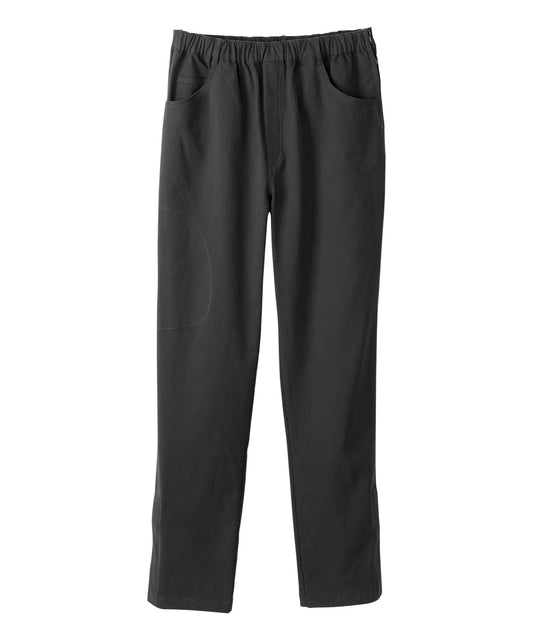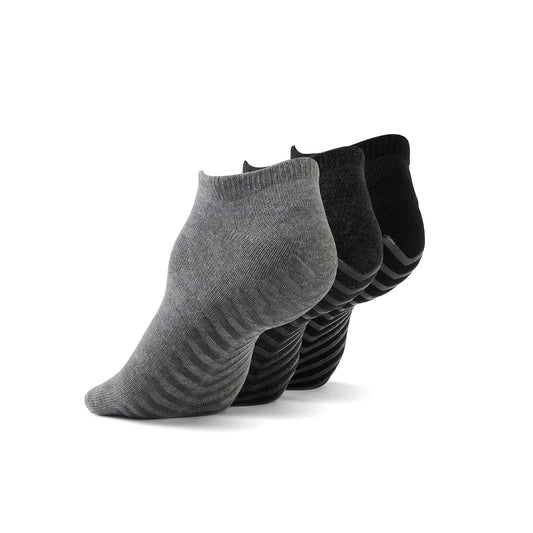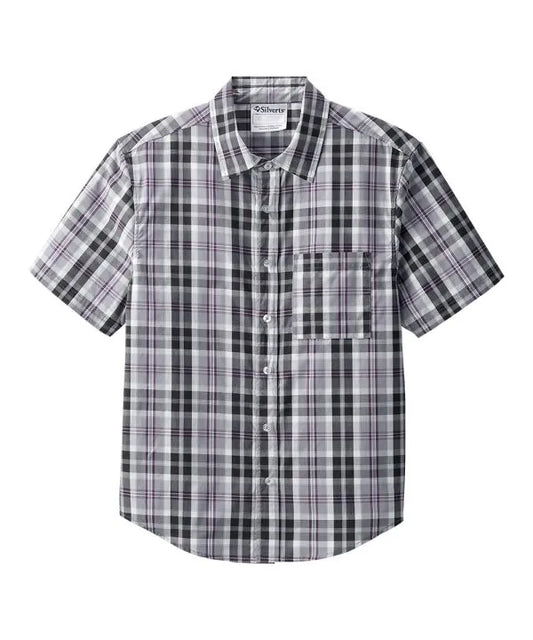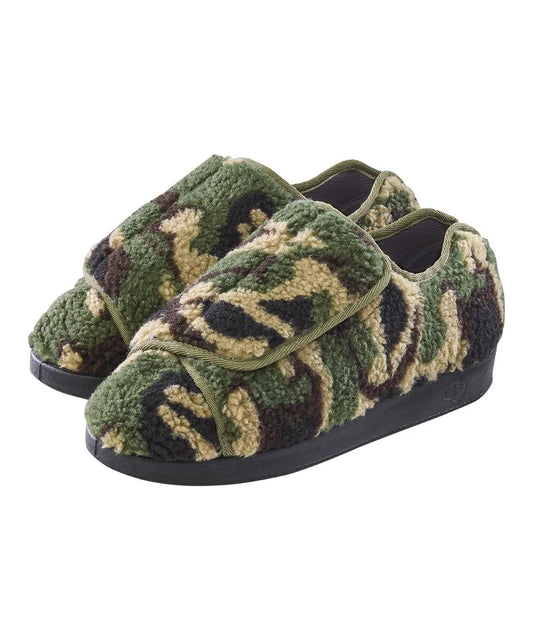Author: Zarif Ahmed
There’s something romantic about winter—until you have to get dressed in it.
For people with disabilities, limited mobility, or post-surgery needs, winter isn’t just about staying warm. It’s about staying safe, staying mobile, and most importantly, staying comfortable while doing it.
This guide was written with one goal: to help you face snow, slush, and sub-zero mornings without the pain, hassle, or bulk of traditional winter wear. From magnetic closures to anti-slip soles, here are the hacks, tips, and must-have products to keep you warm and independent.
Can thermal leggings survive Canadian winters? (Spoiler: Barely.)
The short answer? Not really.
Traditional thermal leggings are great—until it’s -20°C and windy. Add in the challenge of arthritis, muscle stiffness, or difficulty bending, and leggings can feel like wrestling with a boa constrictor.
One of our community members, Nadia from Toronto, shared her experience: “I used to wear three pairs of leggings just to feel warm enough when I went to my rehab appointments. But pulling them on was exhausting. I needed options that didn’t make me dread getting dressed.”
The better approach is to layer fleece-lined adaptive pants over soft, thermal base layers. These allow for seated dressing, reduce strain, and trap heat better than skin-tight options. They’re ideal for people using wheelchairs or recovering from surgery.
Look for pants with:
-
Soft, brushed interiors
-
Side zippers or Velcro openings
-
Adjustable waistbands
Pair these with thermal socks and a long-line adaptive top to prevent cold air from sneaking in. Tools like sock aids and reachers are excellent for those who struggle to bend or use fine motor skills.
Thermal wear alone isn’t enough in Canadian winters—it’s the thoughtful layering and accessible design that make all the difference.
Non-slip boots: For icy sidewalks and dignity.
Every winter, emergency rooms fill with slip-and-fall injuries. For people with limited balance, prosthetics, or slower reaction times, icy sidewalks are more than inconvenient—they’re dangerous.
This was the case for Henry, a retired librarian in Vancouver. After a fall that led to a fractured wrist, he refused to leave the house when it snowed. “I didn’t trust my footing,” he said. “And I didn’t want to rely on someone to catch me.”
Non-slip boots with adaptive features changed everything for him.
Look for boots that are:
-
Easy to pull on with one hand
-
Lined for warmth without adding weight
-
Designed with zippers or Velcro instead of laces
-
Built with anti-slip rubber soles
June Adaptive and other brands now offer adaptive footwear with side zippers, wider openings, and enhanced grip for icy conditions. Consider combining them with removable ice cleats if you walk on untreated sidewalks or parking lots.
Henry told us, “I went from skipping my community events in winter to showing up early.” The right pair of boots gave him more than traction—they gave him back confidence.
Why zippers > buttons when your fingers are frozen:
If you’ve ever tried to fasten a tiny button with numb fingers, you understand the frustration. Add in gloves, neuropathy, or arthritis, and it becomes nearly impossible.
That’s why magnetic zippers, oversized pull tabs, and Velcro closures are essential in cold-weathercold weather dressing.
Magnetic zippers align automatically and snap together with minimal force. They're especially helpful for stroke survivors or those with Parkinson’s who may experience tremors.
Products like June Adaptive’s magnetic jackets eliminate the need to grip small pieces or strain fingers. The magnetic closures are often hidden beneath traditional-looking fabric, offering both function and style.
A caregiver from Halifax told us about her client, Louisa: “Before, it would take ten minutes just to button her coat. Now, with her magnetic jacket, she’s out the door in under two.”
Adaptations like this not only improve speed but reduce anxiety. When dressing becomes easier, the whole day feels more manageable.
Layering without looking like the Michelin Man: A guide.
Layering is critical to staying warm, but too often it leads to bulky, immobile outfits. This isn’t just uncomfortable—it can be unsafe for people who use mobility aids or need help transferring.
Smart layering is about fabric choice, not just quantity. Adaptive layers are designed to trap heat without the puffiness.
Here’s an ideal layering system:
-
Base layer: Moisture-wicking thermal shirt made from bamboo or cotton blends
-
Mid layer: Fleece vest or adaptive pullover with magnetic closures
-
Outer layer: Insulated jacket with windproof, water-resistant fabric
Avoid heavy wool or tight turtlenecks that restrict motion. Choose clothing that’s easy to get on and off, especially if toileting assistance is needed.
One physical therapist noted that patients who wore layered adaptive outfits moved more freely and felt more motivated during outdoor rehab walks.
Try combining the Women’s Magnetic Zipper Active Jacket with a base thermal and fleece top. This combination provides warmth, breathability, and flexibility, —without unnecessary bulk.
Adaptive winter coats that keep you looking, and feeling, warm and stylish.
If your coat takes five minutes and a second person to get on, it’s not helping.
Traditional coats aren’t designed for people with reduced mobility or fine motor difficulties. Adaptive coats, however, make dressing significantly easier.
Features to look for:
-
Magnetic or Velcro front closures
-
Side zips for seated dressing
-
Lightweight, synthetic insulation
-
Shortened backs for wheelchair users
One of June Adaptive’s most praised products is the Men’s Sherpa-Lined Jacket with Magnetic Closures. It looks like a classic flannel jacket, but it opens easily even with one hand.
Let’s talk about Miriam, a 71-year-old retired teacher from Ottawa who recently underwent shoulder surgery. “My old parka felt like armourarmor,” she said. “I couldn’t lift my arm to get it on.” After switching to a magnetic winter coat, dressing became easier —and less painful. “I finally felt like myself again.”
Dressing shouldn’t feel like a battle. Adaptive coats transform a daily challenge into a simple, empowering routine.
Adaptive accessories that make a big difference
Winter isn’t just about coats and boots. Small accessories play a critical role in safety and comfort, especially for people with disabilities.
-
Anti-slip socks: These are ideal for indoor use, particularly on tile or hardwood floors. June Adaptive’s ultra-soft socks offer comfort and prevent falls.
-
Lap blankets with pockets: Great for wheelchair users or anyone spending extended time outdoors. Choose fleece-lined ones for extra warmth.
-
Snap-on scarves and gloves: Instead of wrapping and tying, look for scarves that fasten easily and gloves with magnetic or Velcro closures.
-
Headbands and earmuffs: For individuals sensitive to pressure, these offer warmth without the compression of full winter hats.
These accessories can significantly improve daily routines, especially in group living environments or care homes.
Ground-up wardrobe building suggestions
Building a winter wardrobe that works from the ground up means selecting pieces that offer both warmth and practical accessibility. The Men’s Flannel Nightgown with Back Overlap is perfect for cozy nights or lounging indoors—it’s soft, easy to put on, and designed with back overlap closures for assisted dressing.

For added warmth that doesn't require complex layering, the Scarf with Hood and Pockets combines three winter staples in one: a hat, a scarf, and a pocketed hand warmer. It’s ideal for quick outings or caregivers supporting dressing routines.

And when it comes to layering with comfort and elegance, the Women’s Cozy Plush Shawl is a stylish solution for those who are sensitive to constrictive clothing or need gentle warmth indoors. Each of these products helps form the foundation of a functional, adaptive winter wardrobe, prioritizing ease, comfort, and independence from morning to night.

Real-life impact: Stories from the community
We often hear how one piece of clothing can transform a winter season.
A daughter wrote to us about her father, a stroke survivor: “Before your magnetic coats, he refused to leave the house in winter. Now, he’s the first one waiting by the door when the paratransit bus arrives.”
Another message came from a personal support worker: “My client used to cry during morning dressing. We switched to adaptive pants and jackets, and now it’s something we do together without stress. It changed our mornings—and our relationship.”
These stories underline the emotional power of accessible clothing. It’s not just about avoiding frostbite. It’s about maintaining dignity, confidence, and connection.
Conclusion: Independence is always in season
Winter is a demanding time, especially for individuals with mobility limitations, chronic illness, or sensory sensitivities. But the cold doesn’t have to mean discomfort, frustration, or loss of independence.
With the right adaptive clothing—from magnetic coats to non-slip boots—you can face the season with confidence. And for caregivers, it’s one more way to offer respectful, dignified support.
Explore more at JuneAdaptive.com. Our collection of adaptive winter essentials is designed with real people and real challenges in mind.
Stay warm, stay safe, and most importantly—stay empowered.















